

Josh Nevett
2026 Toyota Camry review
2 Hours Ago
It's the very last road-going V10 Lamborghini ever. Does Huracan Tecnica live up to the expectations of nearly two decades of development?



Publisher

Publisher


Publisher

Publisher
Where expert car reviews meet expert car buying – CarExpert gives you trusted advice, personalised service and real savings on your next new car.
The new Lamborghini Huracan Tecnica is the best road-going V10 Lamborghini ever made.
It’s the compilation of everything the brand has learnt from the original V10 Gallardo (2003) and all its derivatives, in addition to the first-iteration Huracan (2014), Huracan Evo (2019) and the most applicable bits from the track-focused Performante (2017) and STO (2021).
If you ask the folks at Lamborghini, they will tell you the Tecnica is basically an STO for the road, but the reality is that its actually so much more.
It’s the last of an era that will never live again. It’s the car that in decades to come, will be the one that sees out the naturally-aspirated V10 family once and for all before its twin-turbo hybrid replacement comes in.
If you’re wondering why Lamborghini has released yet another version of the Huracan, given there are so many customers already waiting for delivery of their Huracan EVO and STOs, the answer lies in the understanding the Tecnica has some very unique attributes.

As you can probably guess, it brings some design elements that will link it to not only the replacement for the Aventador due to be unveiled in the next six months, but also the Huracan replacement due in 2024.
The Tecnica is also the missing gap between the RWD EVO and the STO (if you thought there was one). It’s a more hardcore version of the EVO but does not look or feel like a race car, so it’s a more usable daily. It’s also a lone-wolf in the internal combustion game of super-sports cars.
While every one of its direct or indirect rivals – Ferrari F8/296 GTB, McLaren Artura, Mercedes-AMG GT, Aston Martin Vantage, Maserati MC20 etc. – are either turbocharged or hybrid, the large-capacity and naturally-aspirated 5.2-litre V10 in the Huracan remains a big finger to the current trend of manufacturers bowing to emissions regulations (although it’s slightly compromised in the Tecnica as you will read below).
From the outside, the Tecnica is very easily identifiable as a new variant. The things you probably can’t see include the fully carbon-fibre bonnet (if you pay more, Lamborghini won’t paint it) and engine cover.
The underbody is further refined with new aero deflectors. It measures a good 6.1cm longer than the EVO but remains the same height and width.
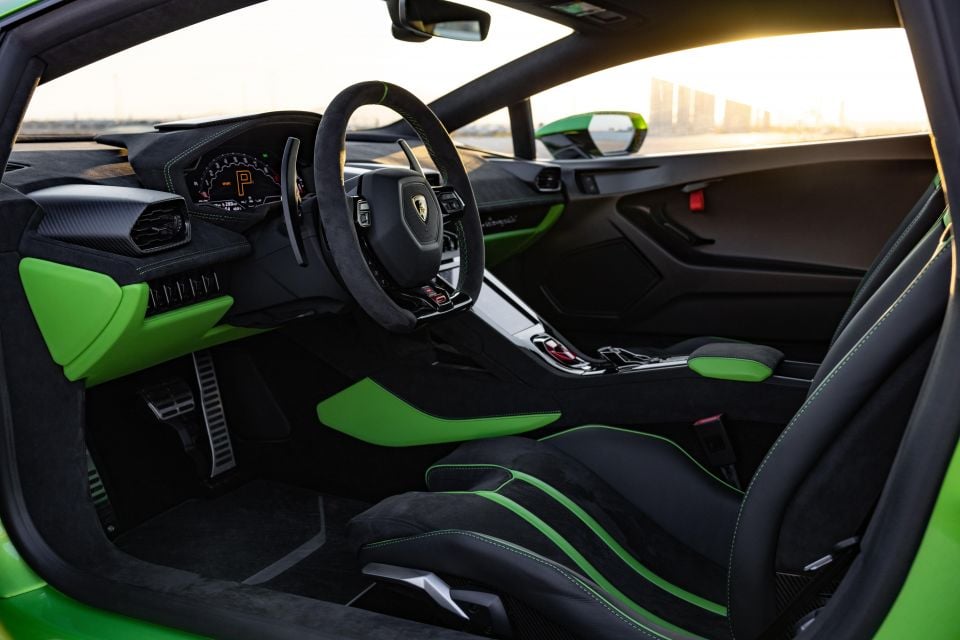
The things you can see are the new front bumper featuring the Terzo Millennio’s black Ypsilon design, which brings in an air curtain for the first time in a Huracan, helping direct air for better cooling.
Following it from behind, it’s fair to say it’s the most ‘supercar’ looking variant of the road-going Huracan famiglia, with a much more aggressive rear design incorporating a fixed rear wing that adds a 35 per cent improvement in rear downforce compared to the EVO and new hexagonal exhaust pipes. It rides on Damiso 20-inch diamond-cut wheels with a hexagonal design, a theme which is followed throughout the car.
We flew all the way to Spain to drive the Huracan Tecnica both on track (Circuit Ricardo Tormo) and around the twisty roads surrounding Valencia.
The verdict? If you have been contemplating buying a Huracan for years but have been waiting for the right variant to show up, we can tell you it’s here.
The problem? If you walk in an order one today your best-case-scenario is at least 12 months until delivery, if not closer to 18 months if you are further down the queue. But let us tell you why it’s definitely worth the wait for the best of the last V10s.

Quoting a retail price for a Lamborghini is a little dishonest.
While the list price is $440,900 plus on-road costs in Australia, that does not include stamp duty which in most states will add at least another $30,000-40,000 to the price.
Then you have options, more options, dealer delivery and a whole bunch of other things.
Realistically, you will be paying around $550,000 for a modestly specced Huracan Tecnica once it hits the road, and likely over $600,000 if you go a little wild with the options list.

Buy your new car without the stress. It's fast, simple and completely free.

Great service from Travis and team, second time I have used this business would not hesitate to recommend them to anyone
Craig C.
Purchased a Ford Ranger in Sunshine Coast, QLD
CarExpert helped Craig save thousands on his Ford Ranger, now let us save you on your next new car.
Find a dealThe interior of the Tecnica is more of a minor improvement over the EVO, which itself was a huge step forward on the original.
It still has the aeroplane cockpit feel with the starter button dramatically covered by a flickable safety switch. It’s tried and tested and still evokes an emotional feeling of elation each time one enters the cabin.
The same 8.4-inch touchscreen system in the centre console is carried over and works well for wired Apple CarPlay. Although, if used for Apple or Google navigation systems, it doesn’t bring turn-by-turn prompts onto the instrument cluster display and it becomes a little annoying to have to take your eyes off the road to look.
We found the standard audio system good enough for those occasions when you can’t be bothered to listen to the engine. There is the option for carbon-fibre doors and use of lighter material for the interior if you so wish to spend the extra cash.



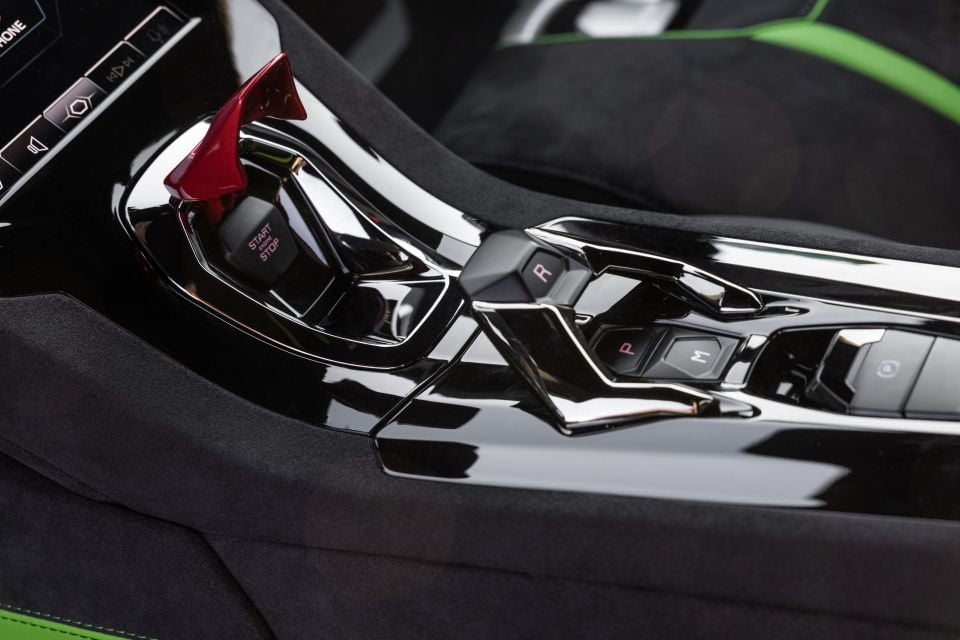
The steering wheel is nice and thick with the paddles well-placed for shifting gears yourself. We also think the seating position is relatively comfortable with the adjustable seat allowing for an average-sized adult to have good headroom with or without a helmet on.
Our test cars in Spain all had the sports seats, which Australia unfortunately will not be able to get due to the ADR-85 rules that require a higher capacity seat airbag. This means all Tecnica (and STO) models coming to Australia will be fitted with the comfort seats from the EVO.
This is not exactly a bad thing in the Tecnica, as said seat design is very comfortable and yet still supportive enough in a supercar, but it doesn’t have the same allure as the sport or race seats we have seen in previous models that add a sense of drama and occasion to each drive.
There’s about a 100L of luggage capacity in the front, which seems small but in our experience it can easily fit an overnight bag and some other things. There’s a bit of storage behind the seats as well, but not an awful lot.

For those looking to buy a Huracan Tecnica, let me preface this with the disclosure that this author owns a Huracan Performante that gets driven often, and has had extensive experience across the entire Huracan range since launch – from the original to the Performante, EVO and STO models.
In terms of driving dynamics, a rear-wheel drive Lamborghini has always been made for the purists. For those that want to have their cake and eat it too, the Huracan Tecnica is everything you’d expect from the last variant in the range.
It’s refined, exceptional in its poise and purpose, and perhaps most importantly it fixes the somewhat lacklustre steering of the EVO that felt like a big step backward from the Performante.

Press the start button and the V10 comes to life with a reasonable amount of fanfare, we should count ourselves lucky because cars coming to Australia do not have the unfortunate requirement of having a petrol particulate filter (PPF) fitted, which almost completely mutes the sound.
There are three modes to pick from.
Strada – for when you are putting along in traffic or coming home late at night and don’t necessarily want to impress your neighbours with pops and crackles.
Sport – for when you want to have some serious fun, which also involves going a little bit sideways on the odd occasion.
And, Corsa (Race) – which is just as useful on the road as it is on the race track.
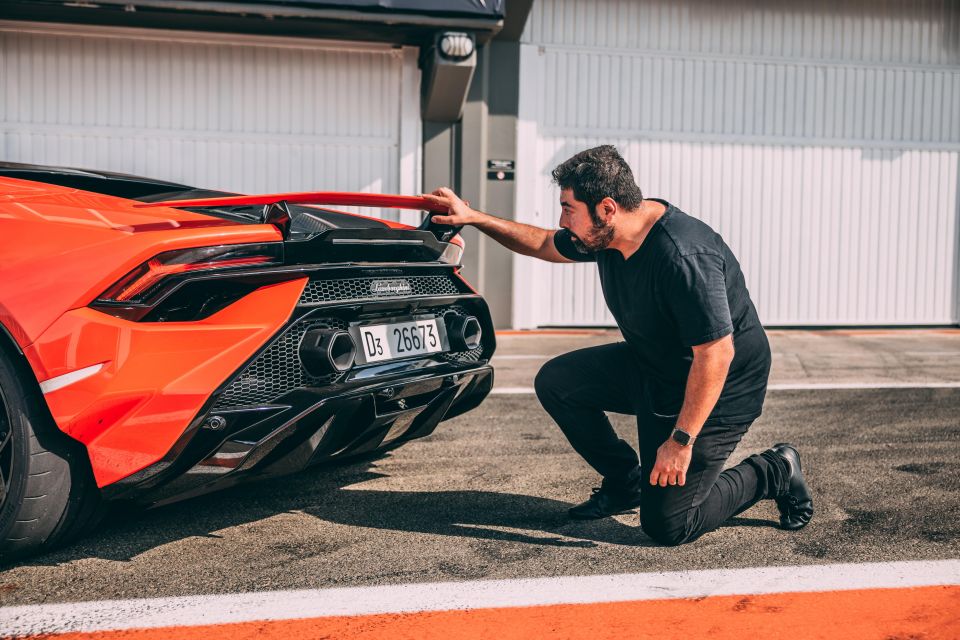
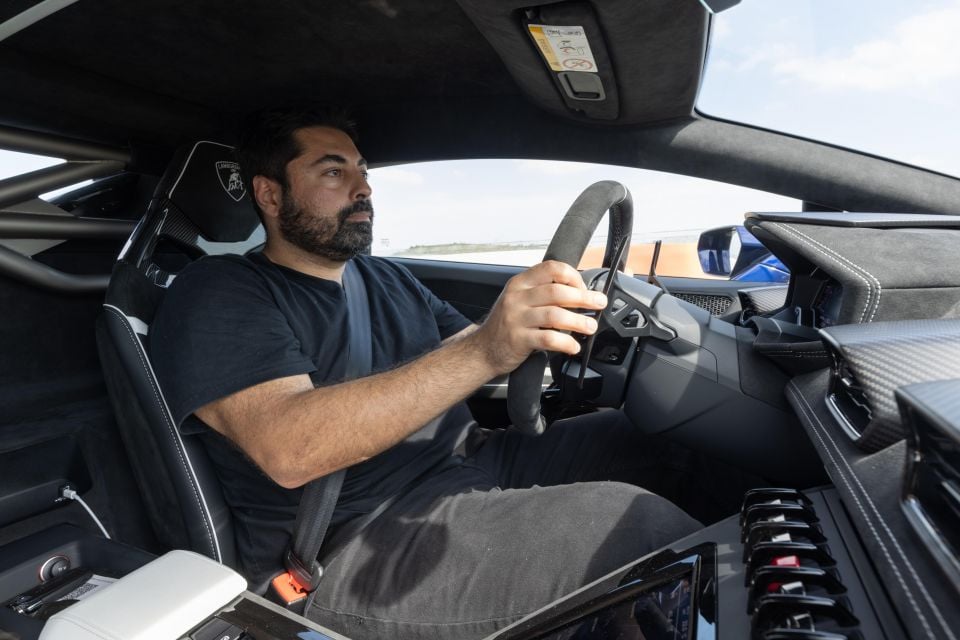
The main improvement the Tecnica has made over the RWD EVO is carrying over the extra power and torque of the STO, with its V10 pumping out 470kW (8000rpm) and 565Nm (6500rpm) all sent to the rear wheels. Thats 21kW and 5Nm up on its predecessor.
Lamborghini quotes a dry weight of 1379kg (which we suspect is with all carbon options, including doors) which is about 40kg heavier than the RWD STO but still 10kg lighter than the RWD EVO (43kg lighter than AWD Evo) and 3kg lighter than the AWD Performante.
In terms of acceleration, the RWD Tecnica is quoted at 3.2 seconds for the 0-100km/h dash, a 0.1 second improvement over the RWD Evo but still 0.2 slower than the STO and 0.3 slower than the Performante and EVO (AWD).
What you lose with having no all-wheel drive – a couple of tenths off the 0-100 time and less out of corner grip – is arguably outweighed by the gains: a very playful supercar that constantly teases you to have a little slide here and there.

For our road drive component, we originally put the Tecnica in Sport which gives the ESC some leeway as to how much it will allow you to drift before it works out you’re an idiot and brings you back in line.
It’s a very controllable amount of drift though, so while it feels a little unnerving at first (especially on Valencia’s super tight mountain roads), the momentary sideways action always corrects itself with adequate counter steer and if one really wished, could be held for a bit of a show – not that we condone such things on public roads of course…
We spent a good two hours going flat-chat through the windy mountain roads of Valencia, and by the end had made ourselves carsick, given the extreme speed and grip on offer.
It’s an exciting experience to always try and get an exaggerated exit out of tight corners in Sport mode and let the Tecnica drift wide on open corners, but if you really want to go fast Corsa mode offers a near seamless exercise in precision driving, with the computers working out how to best apply the car’s might without losing any time.


Look, in the fast switchback corners of a twisty mountain road, it’s not going to match an AWD EVO or Performante for sheer acceleration out of the tight stuff. But unless you are planning on competing in a tarmac rally – and take this from someone that owns and loves his AWD Huracan – the rear-wheel drive is definitely more enjoyable if you’re a confident driver.
If you’re coming out of a twin-turbo V8 Ferrari or McLaren, you may also find yourself asking for a little bit more torque and that kick in the back of seat feel lower down the in rev-range, but the key to the Huracan’s V10 – when it comes to performance – is to keep the revs high and the gears low.
We found the seven-speed dual-clutch transmission to be its usual excellent self. The shifts – up or down – are instantaneous and without hesitation. The transmission is without doubt of the best in the business and has been around long enough to show no signs of reliability issues.
One of the interesting features of the Tecnica is rear-wheel steering system that tends to behave rather differently depending on what mode you are in. Essentially, the rear-wheels turn either toward the direction of travel or counter to it to give the Tecnica better turning capabilities. This works great for parking at low speeds (counter) and even better for fast sweeping corners (same direction as fronts).

As always, Lamborghini’s torque vectoring and its P-TCS (Performance Traction Control System) work like magic to produce a confidence-inspiring performance car that can be a drift machine in Sport and a track-weapon in Corsa all in a matter of a few seconds.
There’s one area of the Tecnica’s driving characteristics that left us slightly disappointed and that was the baffling of the sound (in all three modes) below 4000rpm.
In every single Huracan we have driven so far, the sound is baffled below 4000rpm in Strada only, but as the Lamborghini folks admitted, due to new regulations the baffles now keep the sound on near mute levels across both Sport and Corsa in the Tecnica.
It’s a strange situation because behind you sits a giant V10 that just wants to scream and it feels like someone has… literally, put a sock in it to please those that cannot appreciate the dying art of V10-V12 engines. We also can report there are less crackles and pops than the EVO even past the defined rev range.

We are yet to confirm if this noise restriction will apply to the Australian market (we were told it would be global but remain hopeful it won’t, as we have no regulations here to force the issue).
Either way, the good news is that it can indeed be removed. Either by a basic tune (e.g. VF engineering) to remove the RPM noise restriction or by physically removing the hardware component that shuts the exhaust down below the admitted revolutions.
Of course, you can also just drive it hard and it will never be an issue because really, why are you ever below 4000rpm anyway?
The road drive complete, we spent the afternoon doing endless laps around Ricardo Tormo racetrack, made famous globally for its use in Motor GP.
By the end of the afternoon, my lap time had come down about 3.5 seconds and confidence in the Tecnica had grown substantially.
At high speed it does feel a lot more stable at the rear than the EVO, but still has some way to go to feel anything like an STO on the race track – and that’s totally fine because unlike the STO, you can drive the Tecnica to the shops or a function and not look like you just came out of a Fast and Furious audition.
The steering and turn-in is a huge improvement on any RWD Huracan we have ever driven before, no doubt helped by the rear-wheel steer and a completely revised steering system that now provides a heap of feedback and also is far more precise turn-in.

Where expert car reviews meet expert car buying – CarExpert gives you trusted advice, personalised service and real savings on your next new car.
It’s still not on par with what you might find in the STO or Ferrari’s special series cars, but its a lot better than before.
On track the Tecnica is a bloody fun thing to drive. It’s not as razor sharp as the Performante or STO, but its playful character makes it very entertaining, especially if you put it in Sport and go for theatrics rather than lap times. Either way, the V10 scream from the rear is all you can ever really ask for when going flat-out to the 8500rpm redline.
The Tecnica has superb carbon-ceramic brakes as well (although not the same as the STO, which are better suited to the track), which despite our best attempts by the day’s end, refused to fade. They don’t have that progressive bite you might prefer if you frequent a race track, but are still a very effective and highly engaging system.
Overall, the Huracan Tecnica is a noticeable improvement over the RWD EVO and presents a very enjoyable and fun package to own and live with. Its dual personality lends itself to everyday use but will also shine with purpose on track.

The heart of the Huracan Tecnica is, by today’s standards, an old, old engine.
In the time the V10 family has been out at Lamborghini, Ferrari’s development of non-V12 engines includes the F120B (360), F136 family engine (F430, 458), F154 engine (488 and F8, SF90) and F163 (296 GTB). One could argue that the V10 has been so promising in terms of performance and reliability that Lamborghini has kept evolving it, rather than starting from scratch.
Nonetheless, the current V10 came out in 2014 and is based on the second-generation (odd-firing) heart of the second-iteration of the Gallardo from 2008 – which is itself based on an Audi design, which borrowed a few things from the 5.0-litre even-firing Lambo V10 from 2003.

The dry-sump 5.2-litre V10 has 12.7:1 compression ratio and pumps out a healthy 470kW of power and 565Nm of torque. It falls a little short of its twin-turbo contemporaries like the McLaren 720S and Ferrari F8, which both have 530kW and 770Nm.
It’s next to impossible to make that level of torque from a naturally-aspirated engine, and you really won’t miss it at speeds up 100km/h, it’s really that 100-200km/h and beyond where the turbo monsters come to life.
The seven-speed LDF dual-clutch transmission is without question, one of the best transmissions in the market. There is next to no jerkiness and everything just works, each time, every time. We can’t fault it in any real capacity.

There is no meaningful crash test data from the Huracan platform.
Nonetheless, given it’s based on the Audi R8 and Audi has a reputation for creating well-engineered and safe architectures, we have no doubt the Lambo would prove itself safe if required.
Even so, it’s worth noting the Huracan misses out on a variety of assistance features like autonomous emergency braking and lane-keep assist. This is not too dissimilar to its rivals at Maranello and Woking, however.

Unlike Ferrari, Lamborghini does not provide seven years of free servicing with its cars.
The Huracan is similar to the Audi R8 and goes through an A and B service cycle and prices range from around $1500 to $4500 depending on the work being carried out.

The bottom line on the Lamborghini Huracan Tecnica is simple: buy it if you want the best and definitely last road-going V10 Lamborghini ever. It will categorically not disappoint.
If you want something more track focused, try your luck at getting an STO as there may still be a little bit of time left to secure the last few spots, but that will set you back closer to $800,000.
Click the images for the full gallery
Where expert car reviews meet expert car buying – CarExpert gives you trusted advice, personalised service and real savings on your next new car.
Alborz Fallah is a CarExpert co-founder and industry leader shaping digital automotive media with a unique mix of tech and car expertise.


Josh Nevett
2 Hours Ago


Derek Fung
19 Hours Ago


Max Davies
20 Hours Ago


William Stopford
21 Hours Ago
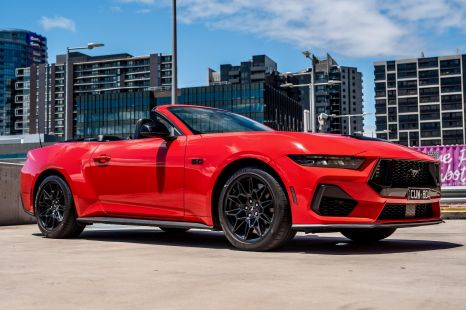

Max Davies
1 Day Ago


William Stopford
1 Day Ago